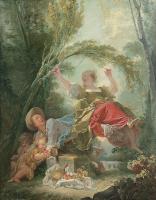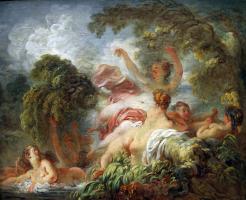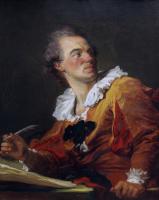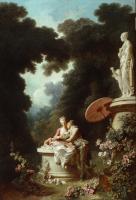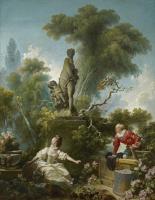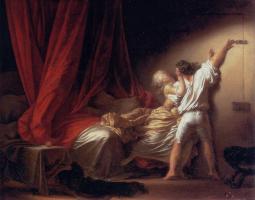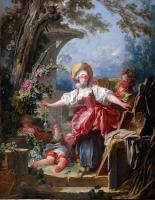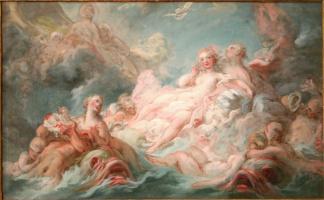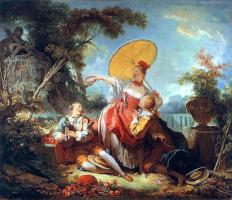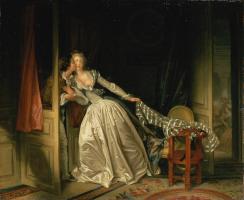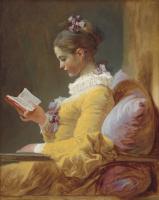Jean-Honoré Fragonard
At the age of fifteen Fragonard was clerk to a lawyer in Paris, but he showed more talent for art, and in 1752 he went to the French masters of the day, Chardin and Boucher, to train as a painter, followed by five years at the French Academy in Rome. He worked with all the accepted subjects of the time: history, portraits, and scenes set in landscape.
He more or less abandoned a public, official career to work for private clients as decorator and artist. Love, courtly and otherwise, love as a grand game, became his speciality. He decorated rooms for several of Louis XV’s mistresses, among them Madame de Pompadour and Madame du Barry. In spite of his associations with the court, Fragonard managed to survive the French Revolution and worked as curator at the Louvre; but he finally fell from official favour under Napoleon, and he died poor.
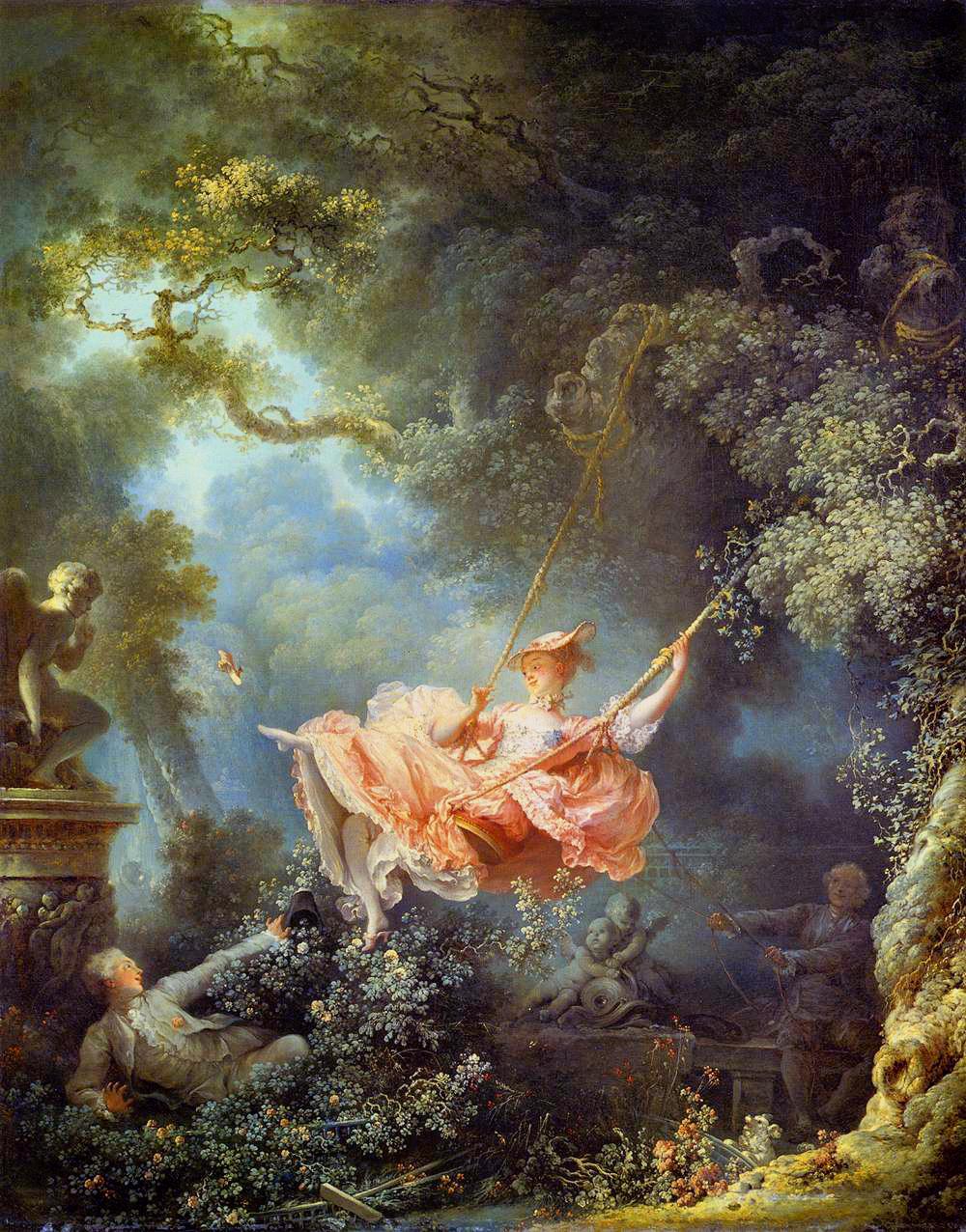 The Swing is an enchantment, and it sums up the reasons why Fragonard’s art has
always pleased. It shows a charming, exquisitely dressed young woman, the
mistress of the reclining man who is gazing at her and up her skirts with such
languid, affected ardour. He is the Baron de St Julien, who commissioned the
picture ; and he and the lady are portrayed in the garden of the house where
she lives. The intention of his look is obvious, recollecting past love and
dwelling with delight on the thought of love to come. In control of the swing
is an older man, possibly the lady’s acquiescent husband.
The Swing is an enchantment, and it sums up the reasons why Fragonard’s art has
always pleased. It shows a charming, exquisitely dressed young woman, the
mistress of the reclining man who is gazing at her and up her skirts with such
languid, affected ardour. He is the Baron de St Julien, who commissioned the
picture ; and he and the lady are portrayed in the garden of the house where
she lives. The intention of his look is obvious, recollecting past love and
dwelling with delight on the thought of love to come. In control of the swing
is an older man, possibly the lady’s acquiescent husband.
The painting centres on the trim and joyful young woman, her legs in their white stockings kicking out from a froth of petticoats; one of her tiny shoes flies through the air as though she were sending a favour to her lover. The lighting cleverly conveys the impression that we are not looking in at a real garden, but at a theatrical scene, in which the lovers are playing parts, both for their own enjoyment and for ours.
The elegant marble statue of Cupid on the left, the fine clothes of the actors themselves in this romantic, amorous moment, and the filtered sunlight, all contribute to a sense of luxury in a natural setting, manicured so finely that not a leaf is out of place. The Baron, reclining in a shrub it seems, would perhaps in real life have felt a little uncomfortable; but here all is ease and joy in a setting of formal frivolity. The painting sums up a mood not of ideal love but of ideal flirtation.

